Evaluating the perceived workload of your training
Interesting our users in our trainings is relatively simple. Nevertheless, it is an art in itself.
There are a multitude of factors that must be considered to hook and engage your users in your courses.
Among these factors, we find one which is devious and which, more than anything, is a two-edged sword to play with.
What if I told you that an exhaustive training can negatively affect your enrollments and the overall performance of your project?
Exclusive online summit
·
May 23 2024
Moments that matter: how to seed great work
What's in this article
The subjective workload of a course is one of those abstract and free-to-interpret terms that can be both a selling argument or a dissuasive piece of information for your users.
As we all have a different level of interest towards a subject and a basic understanding of words that is unique to us, it is important to be clear in our training proposal and the involvement required to consult all the content we have to offer. The duration or the perceived workload that comes from a training can quickly influence a potential user to have a preconceived idea of your course before even consulting it.
For your students, an online course with a heavy workload can create a certain stress while for others, this demonstrates the seriousness and quality of your content.It must be understood that your ideal students surely all have the same opinion on the matter, yet it must be considered ahead of time to turn the odds in your favour.It is therefore important to understand the consumer psychology of your target audience.
Let me explain.
Their perceptions on the amount of work involved in and following a course, whether sporadic or on a regular basis, influence students' decisions about the training they will take next.
We regularly see comments following some of our customers training who mention that despite the relevance of the content, the training feels too heavy, technical or stretches over too long.
This type of feedback is vital and demonstrates the importance of testing your courses with a few target clients before officially launching them.
To ensure the success of your training project, you need to offer the best user experience possible to encourage your participants to come back and see more content.
Courses that are too long will be perceived as painful and will sabotage the momentum you are trying to build.
Here is the key question that aims to change your perspective on your creative approach:
What causes your students to think that the workload of your training is heavy or light?
Optimize the segmentation of your content
As expected, the content is directly related to the workload that results from training.
In most cases, the amount of overall content or the variety of subjects covered are the two main factors why people will build an opinion on the anticipated workload of a course. For example, the content of beginner level training is usually not so complex.
However, as the learning curve is steeper, students may be under the impression that they are subject to a course with a heavy workload.
It may also be that the course covers a specific topic that students find difficult to understand, which gives them once again the impression of being faced with heavier training.
Eliminate limiting factors to user's autonomy
Forced relationships and interactions among participants in courses are also factors that influence the perception of workload.
For example, if you ask teamwork to your users or require interaction another participants, this type of imposed relationship feeds the impression of a heavy workload. The use of exams that require manual corrections from trainers may be key in a training process, but must be used strategically.
The creation of unnecessary delays undermines the interest and momentum that users will tries to maintain during their learning period. It is therefore wise to use this approach on a final exam only, or on optional tests that will not restrict access to subsequent content while corrections are pending.
Build rapport
Teacher-student relations also play a role in the assessment of the workload.
As you have probably noticed during your academic studies, students are more likely to invest long hours in the training and work required by teachers they "like", paying little attention to the amount of effort they spend or need to put in.
It is therefore important to put tools and strategies in place to develop a relationship with each of your participants. This solidifies the loyalty of your users while allowing them to have better information retention.
The learning approach
The learning approach you use is the last major factor that impacts workload perception.
Students who feel they are attending a content-heavy course will tend to learn information on the surface. They will memorize the facts and focus on the details, often at the expense of understanding the underlying concepts.
On the flip side, students who try to learn in depth do not generally perceive the workload of the course as heavy. To help your users focus on understanding, not memorizing details, they need to have recurrent self-validation tools in place.
If the tests are frequent, but the questions are about recalling details, students will rightly opt for surface memorization approaches. However, if your tests are rather based on logical questions that force a reflection, your participants will develop the reflex to read more deeply and understand the information, rather than memorize it.
In short
Workload assessment is nothing but an outside perception challenge. It is therefore your responsibility to ensure that your training is easy to consume and to break any negative perceptions of "overflow of content".
Ask feedbacks from your participants following the training, collect testimonials and work on the social validation of each of your training to win the trust of your future participants.
Being an expert means knowing a lot of things. This should not, however, intimidate your potential customers and students. It's up to you to make it a sales pitch and one of your differentiators.
Discover, manage, and grow your team’s skills to unleash their potential and retain your rising stars.




